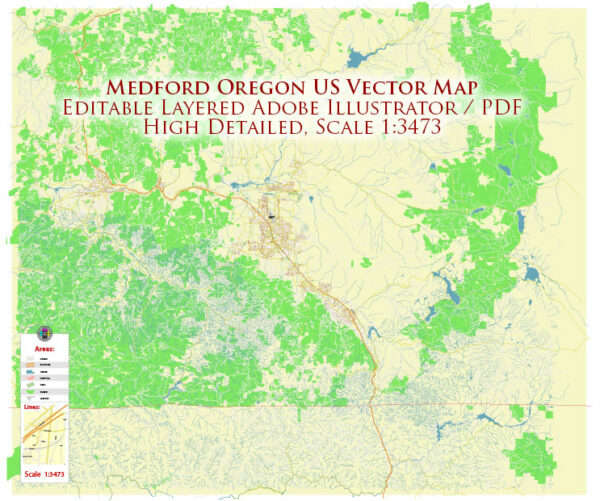Medford, Oregon, has a rich history of urban development that spans over a century. The city is located in Jackson County in the southern part of the state, and its growth and development have been influenced by various factors such as transportation, agriculture, and economic opportunities. Here is a brief overview of the history of urban development in Medford:
- Early Settlement and Incorporation (19th Century):
- Medford was first settled in the 1880s and was incorporated as a city in 1885. The city’s location in the Rogue Valley made it an attractive area for agriculture, particularly pear orchards and other crops.
- Railroad Expansion:
- The arrival of the railroad in the late 19th century played a crucial role in the development of Medford. The Oregon and California Railroad connected Medford to the main rail lines, facilitating the transportation of goods and people and contributing to the city’s economic growth.
- Agriculture and Orchards:
- The fertile soil of the Rogue Valley was conducive to agriculture, and Medford became known for its pear orchards. The expansion of orchards and agricultural activities contributed to the economic prosperity of the region.
- Economic Diversification:
- Over time, Medford’s economy diversified beyond agriculture. The city saw the establishment of various industries, including timber, manufacturing, and commerce. This diversification helped Medford weather economic changes and contributed to its long-term stability.
- Post-World War II Growth:
- Like many other American cities, Medford experienced significant growth in the post-World War II era. The population increased, and suburban development expanded as more people moved to the area in search of employment and a better quality of life.
- Infrastructure Development:
- The city invested in infrastructure development, including roads, schools, and public services, to accommodate the growing population. This period saw the establishment of neighborhoods, commercial districts, and recreational facilities.
- Cultural and Educational Institutions:
- Medford has also seen the development of cultural and educational institutions, including schools, museums, and community centers. These institutions have contributed to the overall quality of life in the city.
- Modern Urban Challenges:
- Like many cities, Medford faces contemporary urban challenges, including issues related to traffic congestion, affordable housing, and sustainable development. Balancing growth with environmental preservation has become a focus for the city in recent years.
- Recreation and Outdoor Activities:
- Medford’s proximity to outdoor recreational opportunities, including the Rogue River and nearby mountains, has contributed to its appeal as a place to live and visit. Parks, trails, and outdoor amenities have been developed to enhance residents’ and visitors’ access to nature.
Understanding Medford’s history of urban development provides insight into the factors that have shaped the city into what it is today—a vibrant community with a mix of historical charm and modern amenities.


 Author: Kirill Shrayber, Ph.D.
Author: Kirill Shrayber, Ph.D.